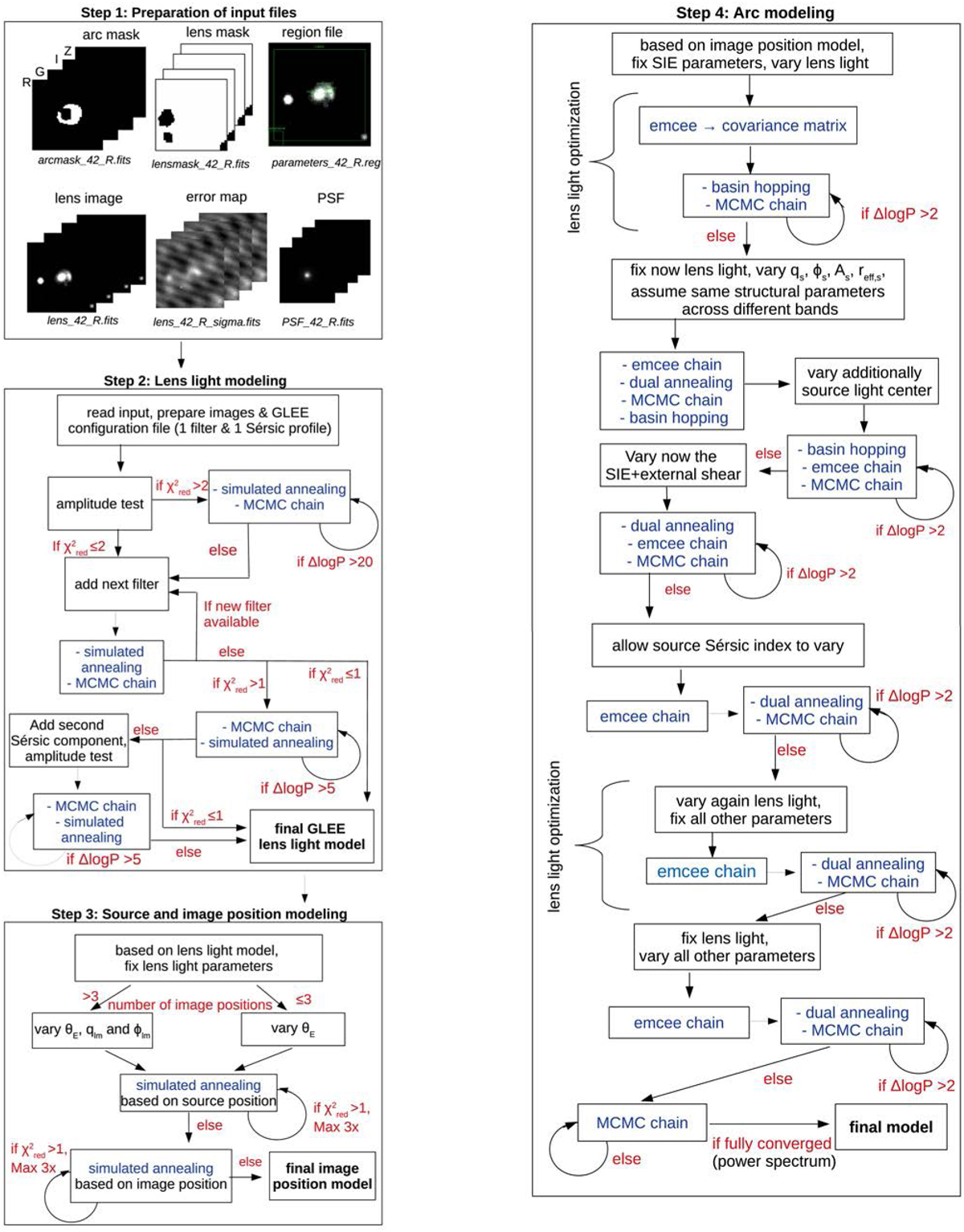Fig. 2

Download original image
Diagram of glee_auto.py, our automated procedure for galaxy-scale lens modeling with GLEE & GLAD, which is divided into four main steps indicated on the top of each panel. For the optimization we make use of simulated annealing, basin hopping, dual annealing, and Metropolis Hastings MCMC sampling. The MCMC, and also EMCEE, are used to get an estimate of the sampling covariance matrix and provide the probability distribution used as decision criteria (indicated as logP). The "amplitude test" refers to a quick check of a newly included Sérsic profile's amplitude to determine the best order of magnitude to use as an initial starting point. This example lensing system has an identification number of 42 and the filter is denoted as R. Further details on the procedure can be found in Appendix A.
Current usage metrics show cumulative count of Article Views (full-text article views including HTML views, PDF and ePub downloads, according to the available data) and Abstracts Views on Vision4Press platform.
Data correspond to usage on the plateform after 2015. The current usage metrics is available 48-96 hours after online publication and is updated daily on week days.
Initial download of the metrics may take a while.


